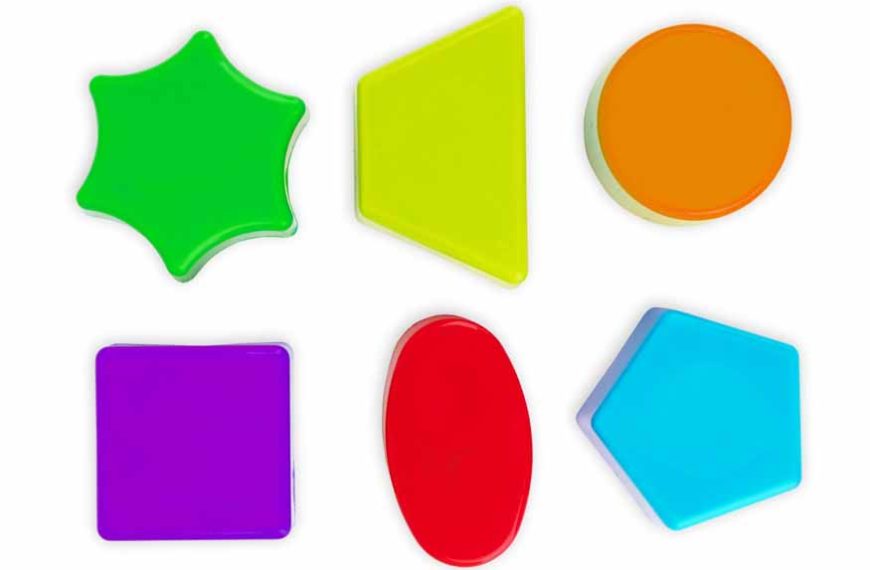As young minds embark on their educational journey, introducing foundational concepts like shapes becomes a delightful and essential task. For preschoolers, the world is a canvas of discovery, and what better way to ignite their curiosity than by exploring the fascinating realm of 2D shapes?
In this blog post, we will delve into some amazing facts about 2D shapes along with engaging and playful activities designed to make learning these shapes a joyous adventure for our little learners.
What Are 2D Shapes?
Shapes with only two dimensions are referred to as 2D shapes. These kinds of shapes are flat. While some of the 2D objects have curved bounds, others have edges and sides.
How to Introduce 2D Shapes to Preschoolers?
Kids have a natural curiosity to explore and discover new things. This growth mindset assists them in sharpening their intelligence. However, parents frequently don’t know how to assist their children in broadening their perspectives. The following tips can assist you in teaching your children the names of 2D shapes.
- Utilise colourful visuals and books that showcase these shapes in a playful context, fostering a fun and memorable introduction.
- After introducing your children to 2D forms, establish a daily practice schedule for them. Take advantage of every chance you get to help kids identify the 2D shapes.
- Use a game or other activity to help children become familiar with the 2D shapes. Read this blog post till the end for simple and fun activities for preschoolers.
- Allow adequate time and space for your youngster to assist them in learning the names of the shapes. This will put them at ease and keep their curiosity about 2D shapes alive.
What Are The Properties Of 2D Shapes?
From round circles to boxy squares, these shapes are everywhere! Now, let’s check out what are the properties of these 2D shapes that make them so interesting with some easy-to-understand points.
Circles – All About Curves
- No corners or edges, just smooth curves.
- Imagine ripples in the water – that’s a circle!
- Planets and wheels all are in circle shapes.
Squares – Super Symmetrical
- Four sides of the same length with four right angles.
- Super stable and really neat and tidy.
- Think of squares as building blocks.
Triangles – Shapes with an Edge
- Come in different types – some have equal sides, some don’t.
- Help make things strong and steady, like pyramids.
- Butterflies have triangles in their wings!
Rectangles – Like Squares, but Stretched
- Kind of like squares that got a little longer.
- Great for making art and framing pictures.
- They’re useful for both practical and pretty things.
Polygons – Fancy Shape Friends
- Hexagons, pentagons, octagons – all kinds of cool shapes.
- They join together to make interesting patterns.
- Artists and architects use them to create awesome designs.
Shapes in Art and Design
- Shapes aren’t just for maths – artists and designers love them too.
- They’re like the colours on a painter’s palette and the plans for building things.
- Shapes tell cool stories using angles and curves.
Shapes All Around Us
- Look at street signs and cereal boxes – shapes are everywhere!
- Shapes make things look balanced and nice.
- They help us understand how everything fits together.
10 Easy Ways to Teach 2D Shape to a Preschooler
In this adventure of discovering 2D shapes, we will now explore engaging activities designed to make learning more a joyous adventure for our little learners. Ready? Let’s go!
These 2D shape activities offer a blend of fun and education, creating a vibrant and engaging environment for preschoolers to discover and embrace the enchanting world of 2D shapes.
- Shape Hunt
- Activity:
- Explanation:
- Shape Collages
- Activity:
- Explanation:
- Musical Shapes
- Activity:
- Explanation:
- Playdough Playtime
- Activity:
- Explanation:
- Storytime with Shapes
- Activity:
- Explanation:
- Shadow Shapes
- Activity:
- Explanation:
- Outdoor Chalk Shapes
- Activity:
- Explanation:
- Shape Sorting
- Activity:
- Explanation:
- Bubble Wrap Printing
- Activity:
- Explanation:
- Nature Scavenger Hunt
- Activity:
- Explanation:
Hide cutouts of different shapes around the room or outdoor play area.
Encourage preschoolers to find and match the shapes they discover, turning the hunt into a playful learning adventure.
Provide coloured paper, child-safe scissors, and glue. Let preschoolers cut out shapes and create collages.
This hands-on activity enhances fine motor skills while allowing kids to explore and create with different shapes.
Place shape cutouts on the floor and play music. When the music stops, kids will stand in a specific shape.
Combining music with shapes makes learning dynamic and engages children in a fun, interactive game.
Give preschoolers playdough and shape cutters, letting them mould different shapes.
This sensory-rich activity not only introduces shapes but also aids in developing fine motor skills through hands-on play.
Choose picture books highlighting shapes. Encourage preschoolers to identify shapes in the illustrations.
Incorporating storytelling makes learning about shapes entertaining and fosters language development.
Use a light source to cast shadows on objects with distinct shapes.
This activity introduces the concept of shadows, making shape exploration a visual and interactive experience.
Draw various shapes with sidewalk chalk and have kids trace or hopscotch along them.
Taking the learning outdoors provides a change of environment and promotes gross motor skill development.
Provide a variety of objects with different shapes. Have children sort them into the corresponding shape categories.
Sorting objects by shape enhances visual discrimination skills and reinforces shape recognition.
Dip cutout shapes in paint and press them onto bubble wrap. Transfer the shapes onto paper.
This creative activity combines art with shape recognition, allowing preschoolers to make their own colourful creations.
Explore outdoors and search for natural items that resemble specific shapes.
Connecting shapes to elements in nature makes learning tangible and encourages observation skills.
Learning Never Ends!
Introducing 2D shapes to preschoolers is a delightful expedition of discovery that sets the stage for their early educational development. By incorporating interactive activities, hands-on experiences, and engaging visuals, educators can create an immersive and enjoyable learning environment.
In this context, EuroKids stands out as a premier choice for preschool education. With its innovative curriculum designed to nurture curiosity and creativity, EuroKids offers a dynamic platform where children can explore the fascinating world of shapes through play and interactive lessons.
Through EuroKids, preschoolers not only undertake a journey of academic exploration but also cultivate a love for learning that lasts a lifetime. Choosing Eurokids is not just a decision for today; it’s an investment in your child’s lifelong success. Enroll now and be assured that your little one is on the path to becoming a well-rounded, confident individual.















